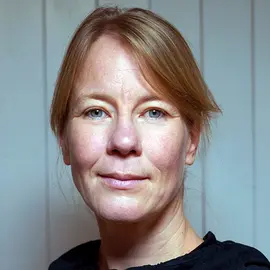
Open access to education and research
By 2032, all publicly financed research results should be made freely available in Switzerland. The University Library offers active support for researchers, lecturers and students.
Publicly funded research should be accessible to everyone. This principle is not just about society getting something back from what it has invested in science, but also about recognising the fact that freely available information is of key importance for the scientific community. Open access scientific publications greatly facilitate the circulation of knowledge and encourage the development of new and perhaps ground-breaking scientific findings. Knowing this, Switzerland has also committed itself to the principle of open access (OA) and has been pursuing a national OA strategy since 2017. The strategy’s original plan was for all publications from publicly funded research undertakings to be made freely accessible by 2024. Although this goal has not been achieved, a positive trend has nevertheless been observed. While half of scientific articles were not freely available in 2017, this figure had come down to 27 percent by 2022.
The revised open access strategy of 2024 now stipulates that the original 100 percent target should be reached by 2032. However, there are numerous challenges to be overcome in achieving this objective. In a report on its OA strategy for 2024, swissuniversities points to the rising costs of scientific publishing, the problematic practice of authors being charged for publication fees and the still low share of long-form publications such as monographs made available on an open access basis. According to Elena Šimukovič, Head of Research & Infrastructure at the ZHAW University Library, there are also various areas of tension that make it difficult to implement the OA principle. For example, it is unclear whether the publication of research in mostly specialised English-language journals really represents added value for society. Open access often also presents researchers with the alleged dilemma of having to make a choice between renowned but subscription-based journals and open access.

“The green open access route represents a cost-efficient alternative that helps to avoid high publication fees.”
Universities have a key role to play in the implementation of Switzerland’s OA strategy. As research and teaching centres, they can contribute significantly to increasingly establishing a culture of openly accessible research. And they can offer support and advice to researchers who have decided to publish via OA. The ZHAW has been actively involved in the implementation of Switzerland’s OA strategy since 2017. Its institutional OA repository, dubbed the ZHAW digitalcollection, lists 2,500 new publications every year. Alongside journal articles, book chapters and conference papers, the more than 20 publication types also include research reports, studies and selected theses.
More than one way to skin a cat
There are various ways to publish openly. The so-called “golden route” sees research articles published directly in an OA journal. Publication costs here are usually borne by the researchers or their institution. The “green route” involves the secondary publication of a research article that was first published in a subscription-based and therefore restricted-access medium. The secondary publication takes place in a digital open access repository such as the ZHAW digitalcollection. These are platforms that are maintained by institutions or specialised departments. There is also the “diamond route”, in which neither the publishers nor the readers pay. Instead, funding organisations or scientific institutions take care of the financing. The ZHAW supports its researchers with all of the publishing methods. They are able to seek advice from the University Library with respect to the publication contract. “Our advisory service has proven popular because most researchers are not familiar with the details of such contracts and want to get certainty about their rights,” explains Šimukovič.
The ZHAW also concludes so-called read-and-publish agreements with major commercial publishers. Thanks to these agreements, authors are not required to pay any publication fees if they wish to publish an article in a journal directly on an OA basis. The ZHAW has also set up an OA fund that provides up to CHF 2,500 for the publication of journal articles and up to CHF 8,000 for the publication of books. “The open access fund is increased every year and is used intensively. At present, it is utilised most frequently by the School of Health Professions,the School of Life Sciences and Facility Management, which each account for 30 percent of its use,” says Elena Šimukovič.
The ZHAW places a particular focus on the “green route,” in which previously published research articles are made freely available in a repository as a secondary publication. “Currently, 58 percent of the ZHAW’s research articles are published via open access. In 13 percent of cases, the option of secondary publication is not made use of, despite the fact that the publishers would allow it,” says Šimukovič. Over the coming years, greater attention is to be given to this as yet untapped potential. The aim, explains Šimukovič, is to convince the researchers that a secondary publication is not only cost-efficient, but also represents added value for themselves, for the ZHAW and interested parties from industry and society.

“The range of teaching materials from universities in the OER repository fills a gap in the market.”
Platform for learning materials
In addition to its work in the area of OA publications, the ZHAW’s University Library is also committed to open education. In July 2024, it launched the first nationwide repository for open teaching and learning materials (open educational resources: OER) in collaboration with the infrastructure provider Switch. In addition to the ZHAW, the University of Applied Sciences and Arts Northwestern Switzerland as well as three teacher-training universities are involved in the current pilot phase. “Our aim is to get as many Swiss universities as possible on board so that the repository is able to establish itself as a national platform,” explains Nicole Krüger, Head of the Open Educational Resources team at the ZHAW University Library. There are currently 600 teaching materials available on the platform, primarily from the fields of health and life sciences. “The platform is aimed at everyone: students, prospective students, teaching staff and private individuals who want to further their education,” says Krüger. The inclusive character of Switzerland’s first OER repository is by design. The platform is intended to intensify the dialogue both within and between the various disciplines and should help create a new, open teaching culture. To ensure that the repository’s content is easy to find, the materials are labelled in a machine-readable form so that they are easily recognised by search engines. The initial feedback on the platform has been exceptionally positive. “This comes as no surprise,” says Nicole Krüger, “as the OER repository fills a gap in the market that even tech giants like Google and YouTube didn’t know how to handle. It does so by providing the opportunity to search for teaching materials from universities in a targeted and open-format manner.”
Visit the ZHAW digitalcollection, the institutional repository of the ZHAW
Learning materials for clinical assessment
The ZHAW Institutes of Nursing and Midwifery & Reproductive Health have developed new digital learning materials for clinical assessment in a two-year interprofessional project. The focus was on promoting the transfer of theory to practice and developing sustainable skills at the Bachelor of Nursing and Midwifery level. The new teaching materials are freely available on the Swiss OER repository launched by the ZHAW in July 2024. They include various media such as instructional videos, workbooks, preparation and follow-up assignments as well as supplementary documents such as checklists, documentation forms, assessment tools and learning diaries.
The materials are intended to support students in developing their skills in clinical assessment. For example, students can use videos to understand in detail how a particular examination should be carried out and what they need to pay particular attention to during practical training. The learning materials are not only intended for the training of new specialists, but should also be used by practice partners in the direct care of patients. The aim is to ensure that the skills acquired are retained and updated even after graduation.
Open architecture knowledge database
Models have been built at the Department of Architecture, Design and Civil Engineering for decades. Many of these models can be admired in a permanent exhibition in Hall 180 of the former Sulzer works in Winterthur. They are marked with QR codes that lead to a database containing photos and additional information. This database has recently become publicly accessible and can be used both in the classroom and in professional design practice.
Visit the database (in German)
(Photo: Stefan Kubli)


0 Comments
Be the First to Comment!